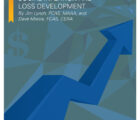
Analyzing, filing and implementing new rates with agility are incredibly important for P&C insurers as they try to stay ahead of an ever-changing risk and a competitive landscape. This remains a cumbersome process, although insurers have made large technological strides in their data management strategies and internal ratemaking platforms. In their Ratemaking, Product, and Modeling Seminar presentation “Streamlining vs. Automating Your Rate Change Process,” Erik Yost of WTW and Jamie Mills of Allstate presented some actionable strategies to more efficiently and accurately produce ratemaking analyses.
A primary business challenge addressed in the presentation is the need for companies to quickly adapt and respond to changes affecting their profitability. This need has been exacerbated by various dynamic factors such as market fluctuations, catastrophic events and economic shifts, including examples like COVID-19, hurricanes, wildfires and inflation. Traditionally, the processes to understand and implement rate changes have been burdensome and disjointed, involving multiple steps that are not only time-consuming but also prone to errors due to their manual nature. The end-to-end rate change process typically includes data preparation, peer reviews, rate level development, filing support, customer impact measurements, technology requirements and documentation — all of which historically involve many separate applications and extensive use of tools like Excel.
Streamlining the Rate Indications Process
Several strategic improvements can make the indication process more efficient and consistent. The presenters outlined a practical application where a single data source can provide a countrywide view of multiple rate level indications simultaneously. This approach ensures consistency despite the varied regulations across states and enhances efficiency by using uniform data models. The speakers discussed caveats in the setup of such a process, including the need for data to be flexible enough to allow for all potential groupings of indications that state managers may want to see, such as by annual statement line, coverage, state or program.
Key actuarial advantages of this streamlined approach include the ability to on-level premiums quickly under a variety of pending rate change scenarios. This method also allows actuaries to focus on one coverage at a time, enhancing confidence in pricing and the efficiency of trend selections. Additionally, the streamlined process facilitates easier access to regional, countrywide and industry data, aligning with actuarial standards and ensuring more credible data for decision-making.
The business impacts of streamlining are significant, enabling instant updates to program rate need views and providing a clear, easily digestible dashboard summary of indications that are readily available for senior management and regulatory filing purposes.
Automating the Rate Change Process
In contrast to streamlining the generation and management of rate indications, automating the rate change process requires a more extensive redesign of systems and a close collaboration between actuarial, product and technology stakeholders. This involves the initial setup of data transformations, database creation and the development of application programming interfaces (APIs) to connect various applications, creating a unified source of truth. This automation extends to creating smart default assumptions for various actuarial inputs such as premium and loss trends, loss development factors and underwriting expense selections. These default assumptions must have the flexibility to consider both internal company data and external sources and be able to mitigate the impact of one-time events or state-specific nuances so that analytical outputs are reliable and applicable in future periods. The reliability of these assumptions is critical to avoid the pitfalls of “garbage-in, garbage-out” scenarios.
The output from an automated rate change process includes state-specific indication values, comprehensive filing support and policyholder impact measurements, all designed to streamline the workflow for actuaries and reduce the time from analysis to implementation. Yost and Mills presented a compelling vision for the rate change process that automates all the time-consuming and error-prone tasks but allows for extensive actuarial intervention and decision-making.
They also highlighted the essential role of the actuary in building and overseeing this automated process to ensure the actuarial soundness of the outputs and adherence to Actuarial Standards of Practice. An expansive actuarial skill set, including programming and data visualization techniques, is necessary to ensure the success of a rate change process revamp.
The shift toward automation, while reducing manual errors, introduces the risk of systemic errors due to the interconnected nature of automated systems. One can easily imagine a data or calculation error carrying forward to all states, coverages or programs. Risk governance frameworks are essential to mitigate these hazards and ensure quality assurance throughout the automation process.
The presentation concluded with a discussion of different levels of streamlining or automation categorized as “Good,” “Better,” and “Best.” Each category reflects varying degrees of automation complexity and organizational impact, from basic mechanization of current processes to a complete redesign of the entire rate change process for optimal efficiency and effectiveness. Yost and Mills then reiterated the need for companies to adapt their rate change processes to better understand and address profitability in a rapidly changing environment. Both streamlining and automating processes provide viable paths forward, with the choice depending on each company’s specific capabilities, resources and strategic priorities. The goal is to enhance the speed-to-market and accuracy of rate changes, thereby supporting more robust and agile business operations.
These insights underscore the transformative potential of rethinking traditional actuarial processes through streamlining and automation and help to empower actuaries and businesses to achieve more with less in an increasingly complex marketplace.
D.J. Falkson, FCAS, is director of actuarial at Lemonade Inc. He is a member of the Actuarial Review Working Group and Writing Sub-group.













